
The Barn at Twittering Machines
By Michael Kraske
CEO – Kraske Electronics AG
27. & 28.08.2022
The equipment used in-Barn:
Beyerdynamic MM-1 measurement mic
Focusrite Scarlett 2i2 USB interface
Set of: Van den Hul D-102 cables
Software: Room EQ Wizzard
I perform this setup process for the Credo Cinema LTM speakers whenever I have the opportunity. Be it an installation in a customer’s listening room, in a dealer’s showroom or at a show. The beginnings of this process go back to my studio/recording days, c.2002, when I started to develop a process and set of tools to optimize speaker placement, equalize them and optimize room acoustics in my own studio. Over the years I refined the process and collected an enormous amount of room- and speaker data. It is an enormous knowledge background that has accelerated setup in critical listening environments and allows very consistent and outstanding results.
Before I critically listen to music, I make sure my hearing is not biased by speaker or room issues. Otherwise, despite experience, you move things around relatively haphazardly and adjust your hearing too quickly and can no longer be critical enough to perform proper setup.
Some things I look at are very basic, like the polarity of each channel. Then I check for any damage that may have occurred during shipping or setup (like loose parts, driver failure, distortion, and the like).
By looking at the spectrogram, I check the reverb in the room, room-modes or nulls. I check the acoustical symmetry of the left- and right-channels.
Next, I begin to move things around. I try to compare different distances of the speakers from the back- and side-walls as well as multiple listening positions and pick the best, where we have even dispersion and not too much variation.
Now the listening begins. The loudspeakers are usually positioned very precisely at this point, depending on the loudspeaker and the room, they are only slightly angled in the direction of the listening position. The playlist is relatively large and consists of tracks that I know very well. The musical spectrum is enormous and I always know exactly what I’m looking for and what I’m listening to. Based on the measurements, the balance is pretty good most of the time, so I focus on the sound-stage, mapping of instruments and focus on changing how the speakers are angled.
Frequency Response:

Clearly, the frequency response is very important. Depending on the size of the room, the speaker and the acoustics, I define certain goals. I look at the speakers separately and in total. Measurements are made close to the speaker, at the listening position and in a grid around the listening position. Apart from room modes or nulls and the balance as a whole, little can be said about room acoustics because the time level is missing. A diffusely imprecise sounding room can look very good with this measurement. So I look at the spectrogram.
Spectrogram:
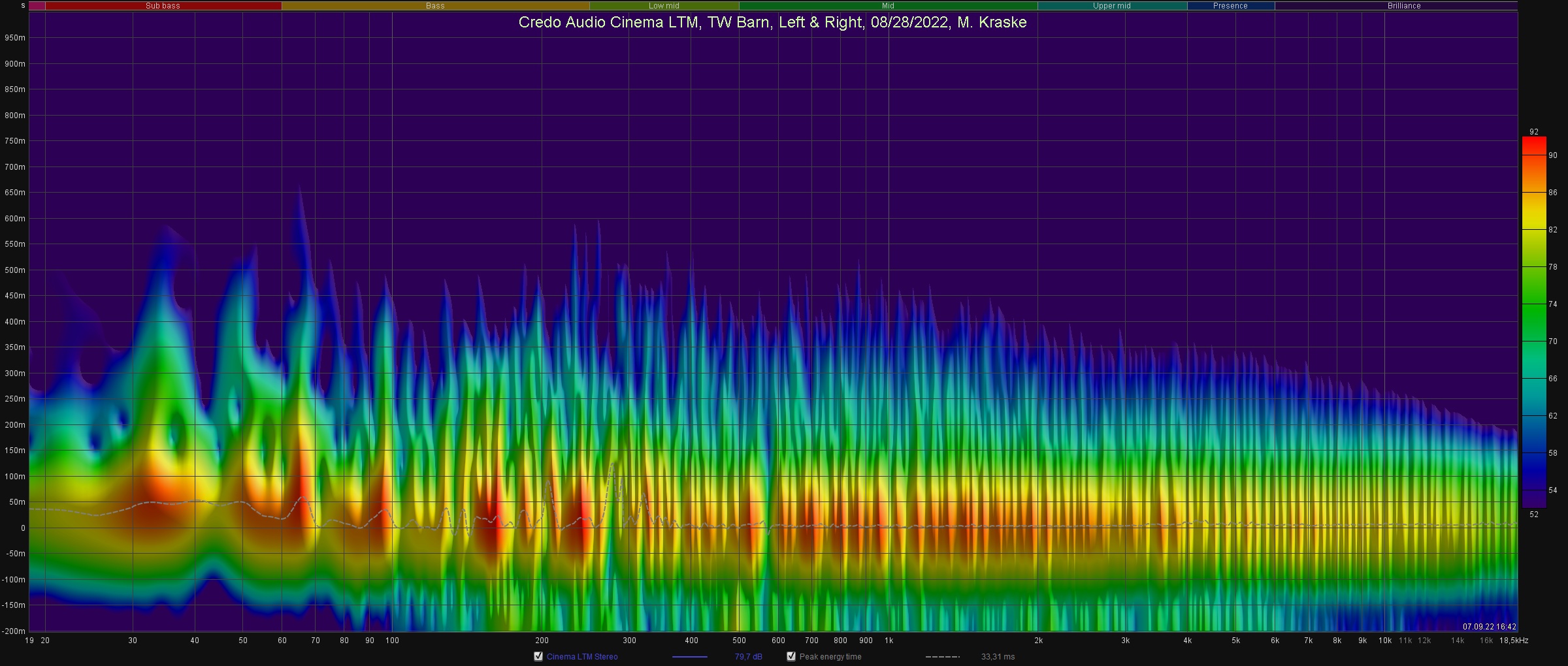
A very good line source, carefully positioned in a large room should show a balanced dispersion of sound energy with not too much variation, which is the case in this example, even if the room does not have any acoustic treatment. The reverberation time is long, corresponding to the size of the room. The red, yellow and green stripes are very balanced and run parallel almost continuously.
But this process is not about room treatment. The goal is to achieve the best setup possible under given circumstances.
Step- or Impulse-Response:
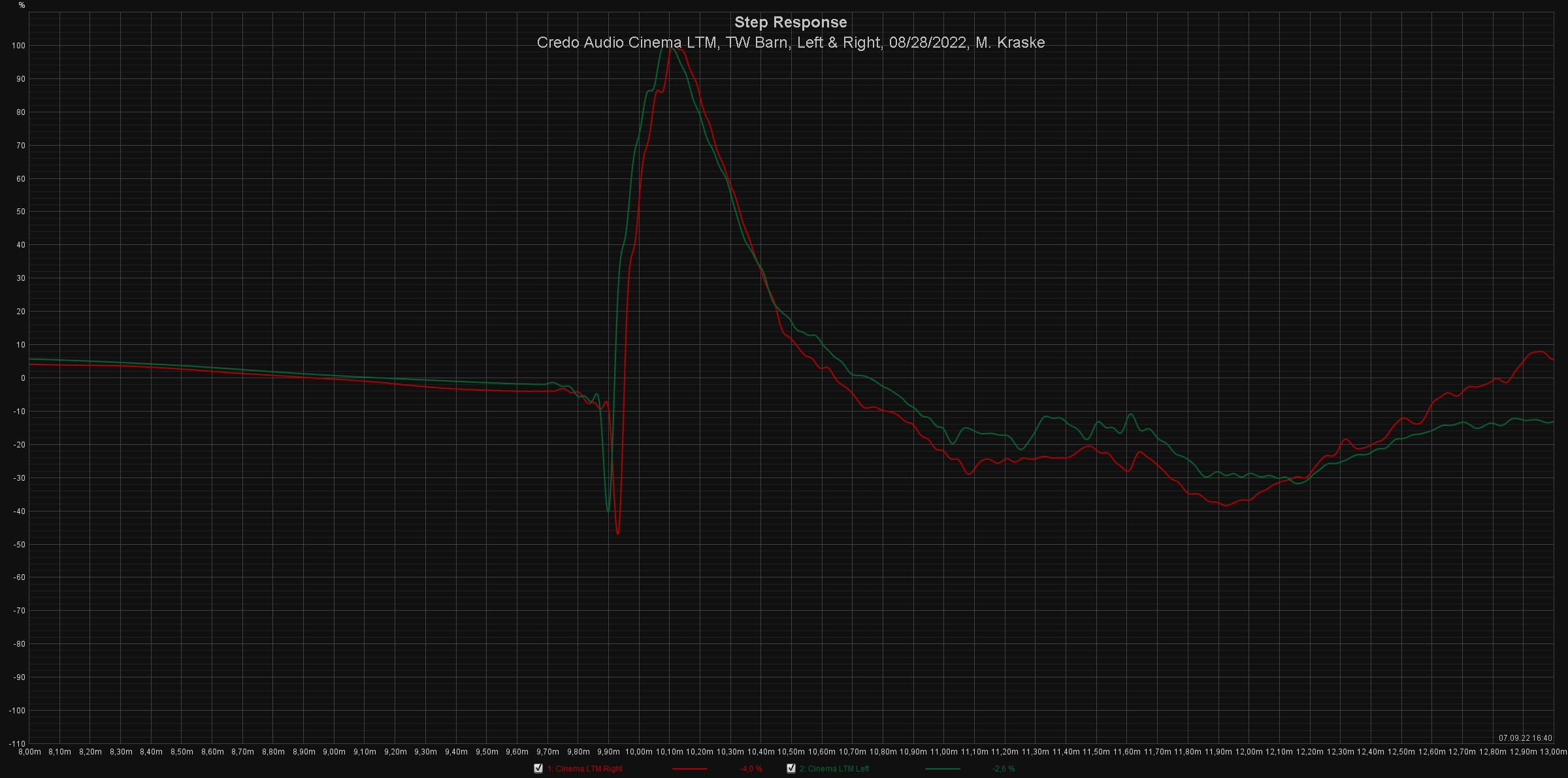
The signal from both loudspeakers should arrive at the listening position at the same time. There is some tolerance in time because our head isn’t locked in as precisely and there is a gap between our left and right ears. But it should look like this, together with the frequency response we can say that the signal from both speakers adds up correctly to a sum.
Sum of Left and Right Channels:
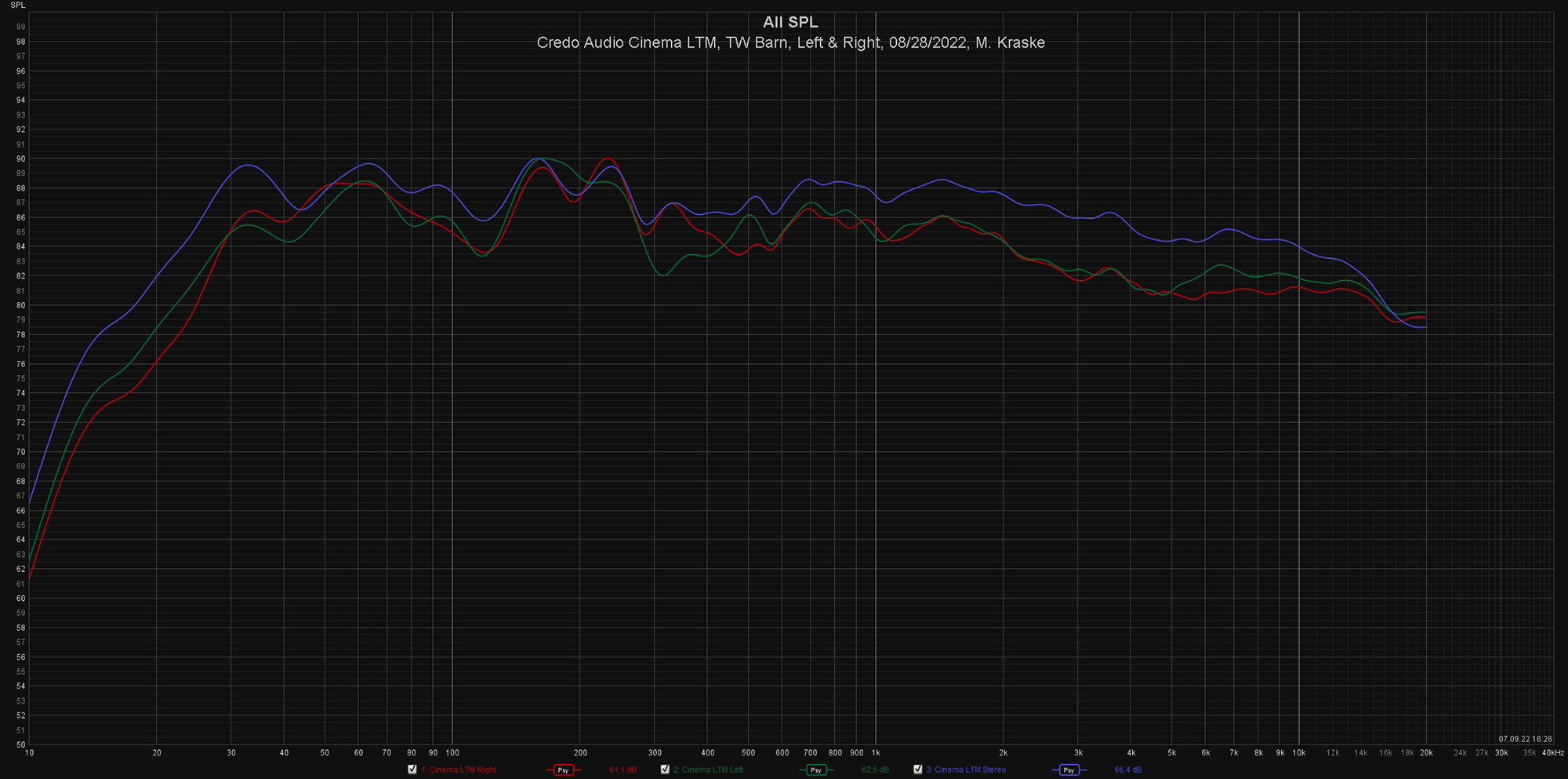
Goals or Limits in Frequency Response
The best mixing and mastering rooms achieve +/- 2dB from 40Hz – 16kHz or better (EBU critical listening environment). Good ones are +/- 5 dB. But they are designed for this one purpose only and can cost a gazillion dollars. 🤣
High-end home listening environments can be wildly different compared to these standards—depending on taste, architectural constraints, or speaker selection and placement. But that shouldn’t be! They should be close.
I usually define two goals I’d like to achieve in a set up—35 Hz to 10 kHz which covers and defines a full-range system (to me), and overall 20 Hz to 20 kHz. These goals include dynamics and distortion levels too, but I do not cover that in this report.
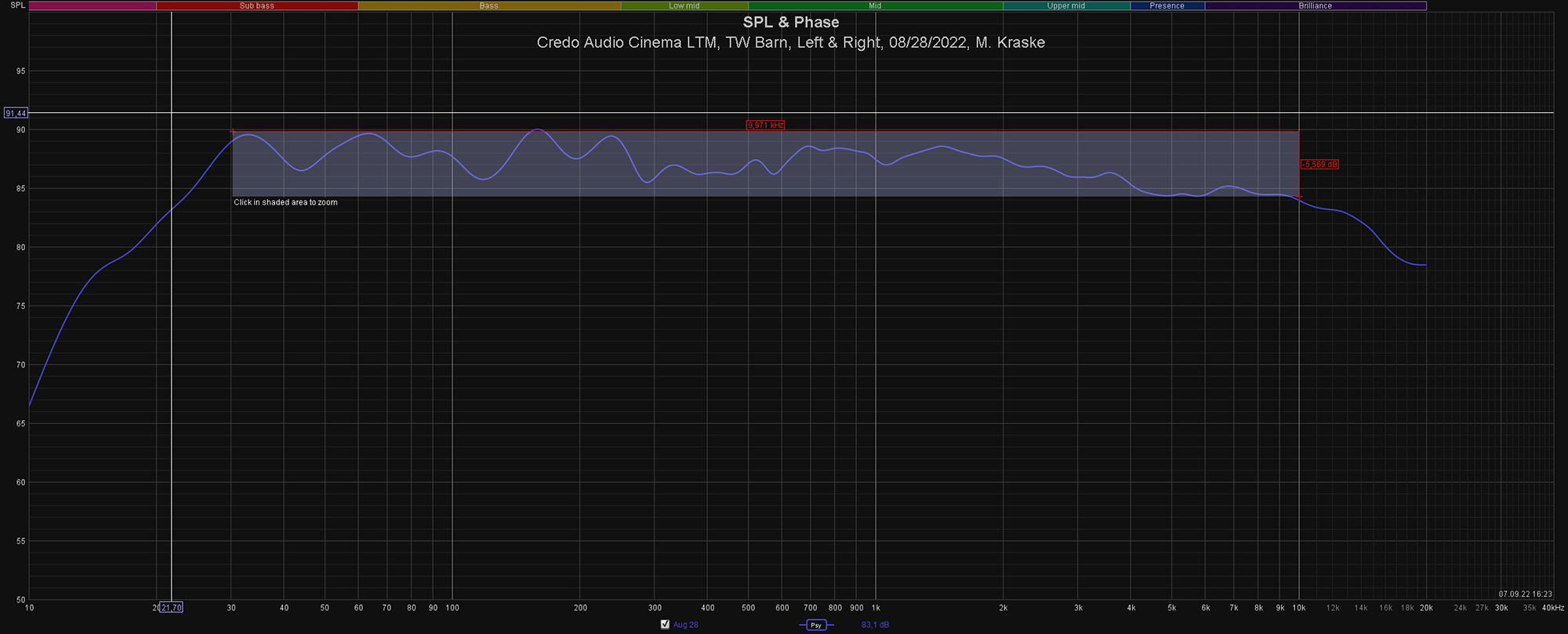
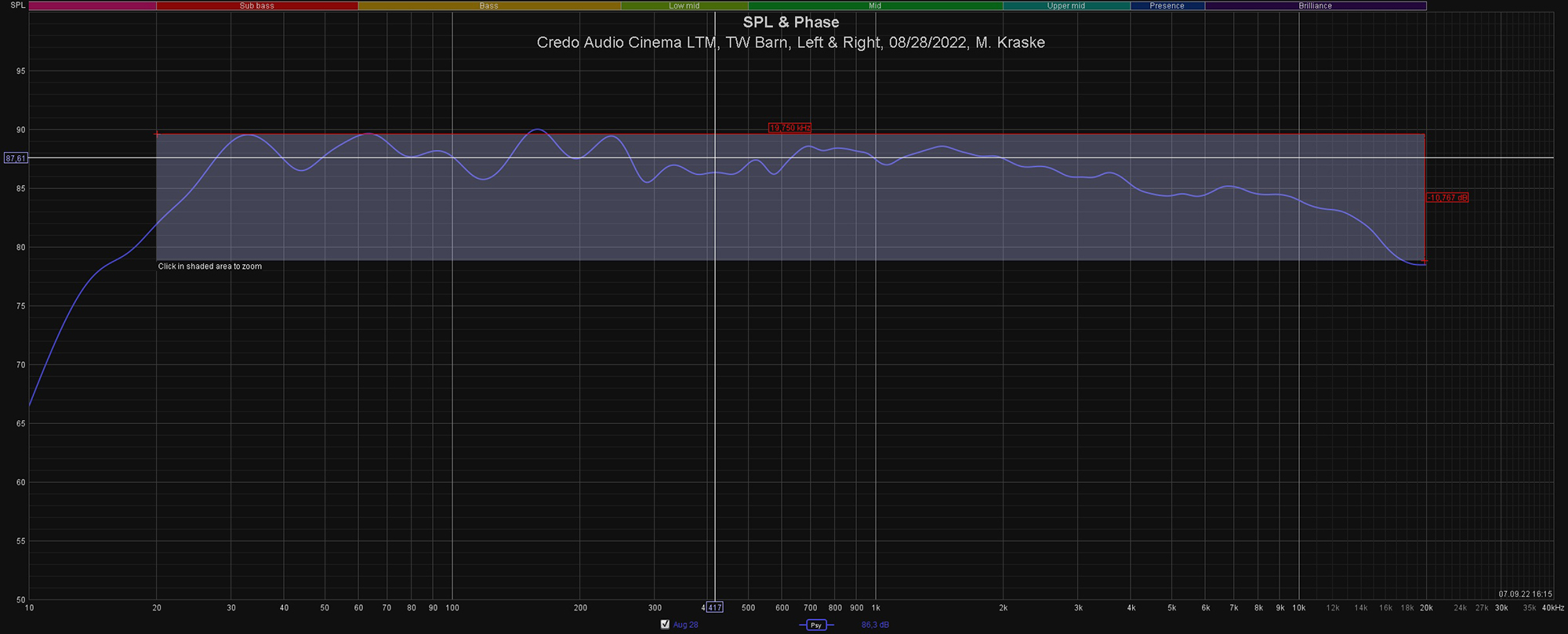
The Barn at Twittering Machines is definitely a critical listening environment. While there is no acoustical treatment, the room has very good proportions and a relatively balanced reverberation time. Together with careful set up, exceptionally good results can be achieved. The Credo Cinema LTM’s in-room response even comes very close to absolute mastering standards.
The results with 1/3 smoothing (industry standard) are:
30 Hz to 10 kHz is +/- 2.75 dB
20 Hz to 20 kHz is +/- 5.35 dB
Best Regards
Mit freundlichen Grüssen
Michael Kraske
CEO – Kraske Electronics AG
